How should trail running shoes fit? Expert advice for optimum comfort
If you plan to run the trails, be sure your footwear is fit for purpose and provides enjoyment and comfort, not pain and discomfort
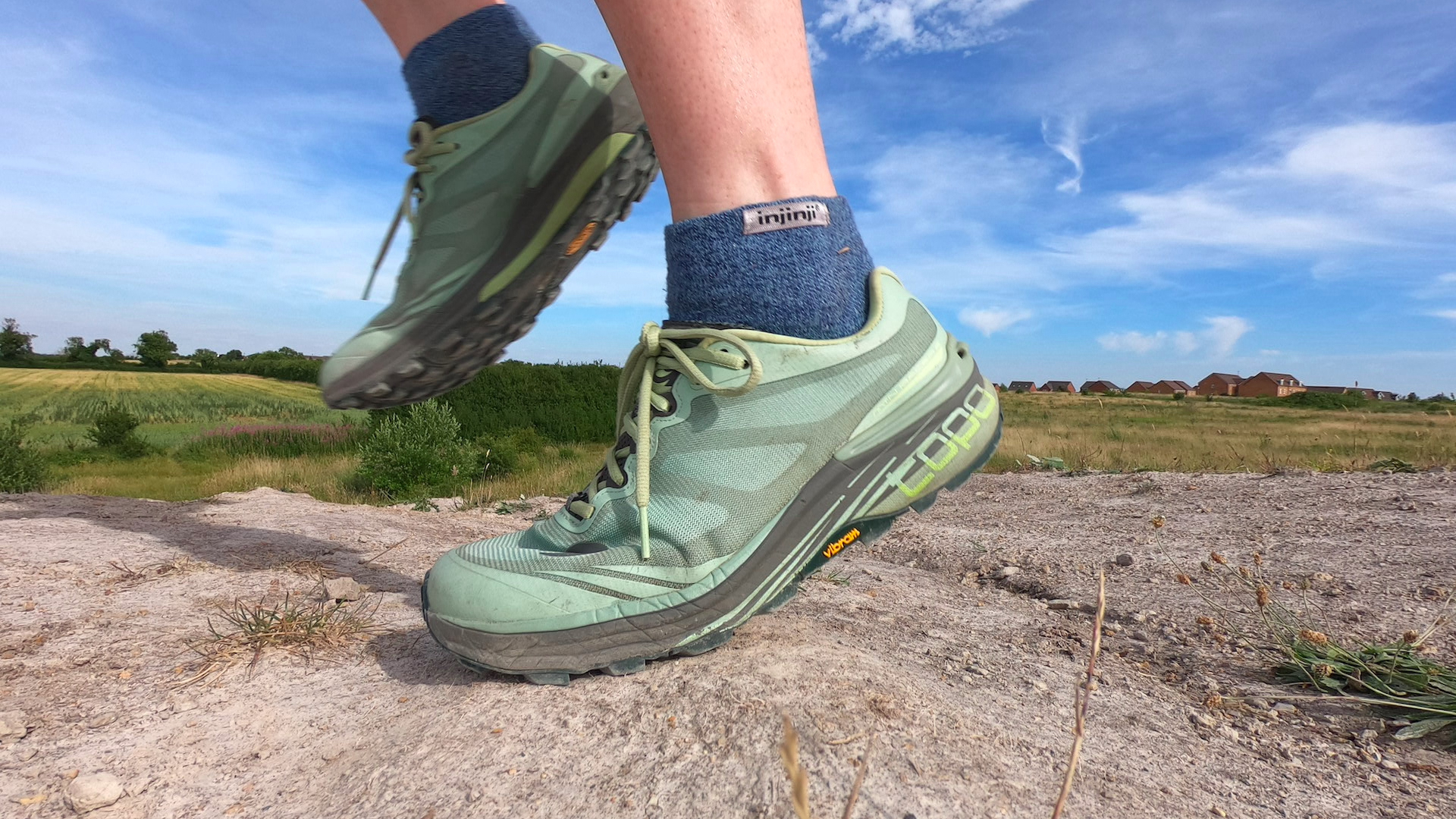
Trail running throws all kinds of variables at us and it's our feet and our shoes that have to deal with the lion's share. From rooty forest tracks and rocky scrambles to soft sand and boggy moorland, the terrain we find beneath our feet demands precision, while our feet also demand a certain amount of protection. So, when it comes to wearing trail running shoes, finding that Cinderella fit is all important if you're going to run in comfort.
Fortunately, the best trail running shoes can be customized to an individual's feet, giving you the precise, locked in feel you'll need when taking on gnarly terrain. We're here with our trail running experts to provide advice on what you need to do to get that perfect fit.
How should trail running shoes fit?
Some of how trail running shoes should fit is down to personal preference, but generally you should be seeking the following:
- Comfortable support – the shoe should feel comfortable yet be tight enough to feel supportive
- Supportive lacing – again, aim for supportive rather than overly tight
- Heel hugging – The heel region of a trail shoe should hold your heel firmly in place
- Wiggle room for the toes – there should be a thumb's width between the tip of your toes and the front of the shoe
- Space around the forefoot – your feet will swell on longer runs
- Decent cushioning – more of a personal preference thing this, though you should aim to have at least some trail feel
- Good grip – ensure your shoes are designed for the types of trails you usually run
See further down our guide for a more detailed look at each element.
Meet the experts
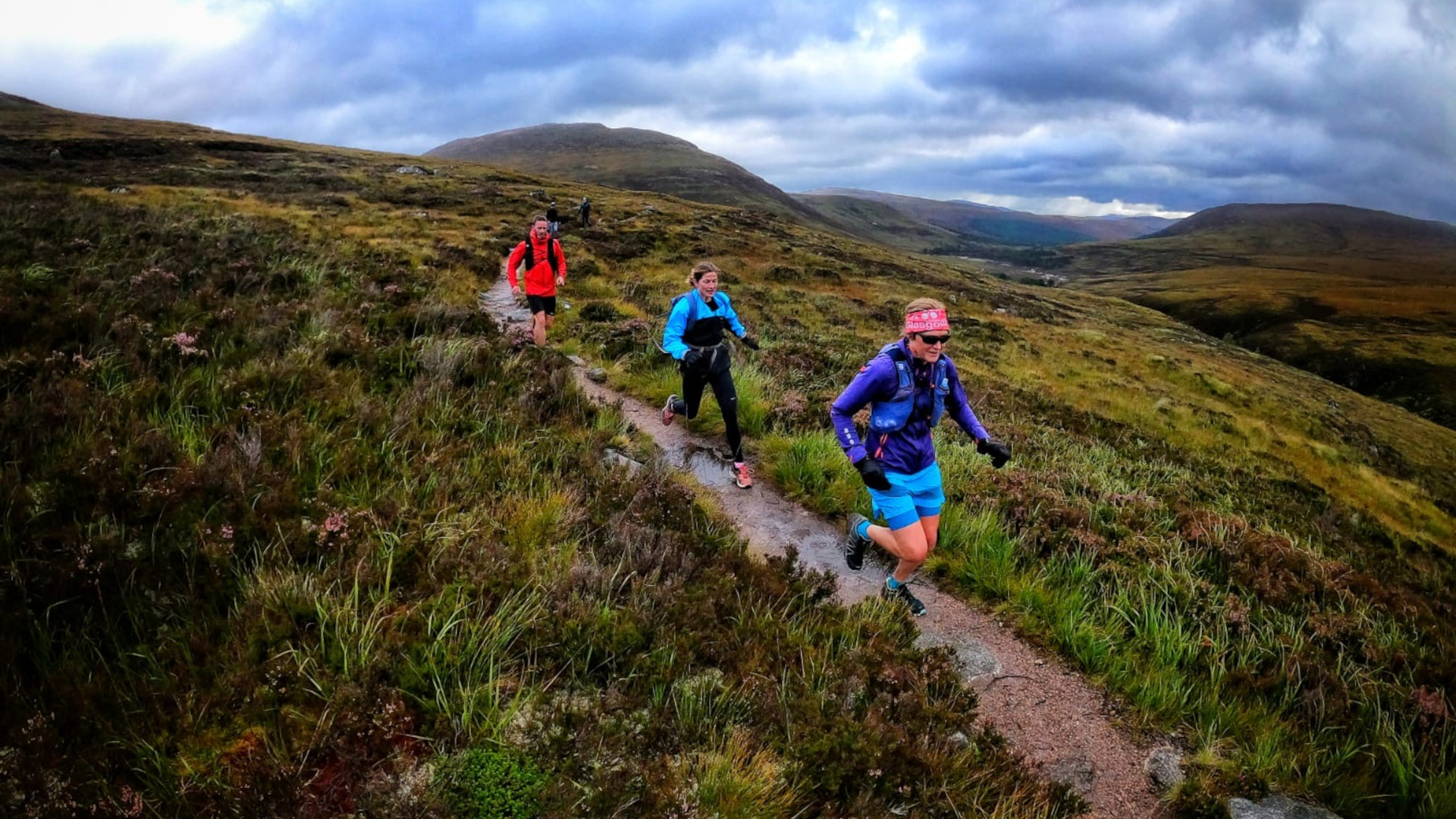
Fiona loves nothing more than donning her running kit and heading for the hills and mountains of Scotland, often with her faithful hound. When she's not running the local hills near Glasgow, she gets her need for speed in the nation's Munros, the mountains over 3,000 feet in height.
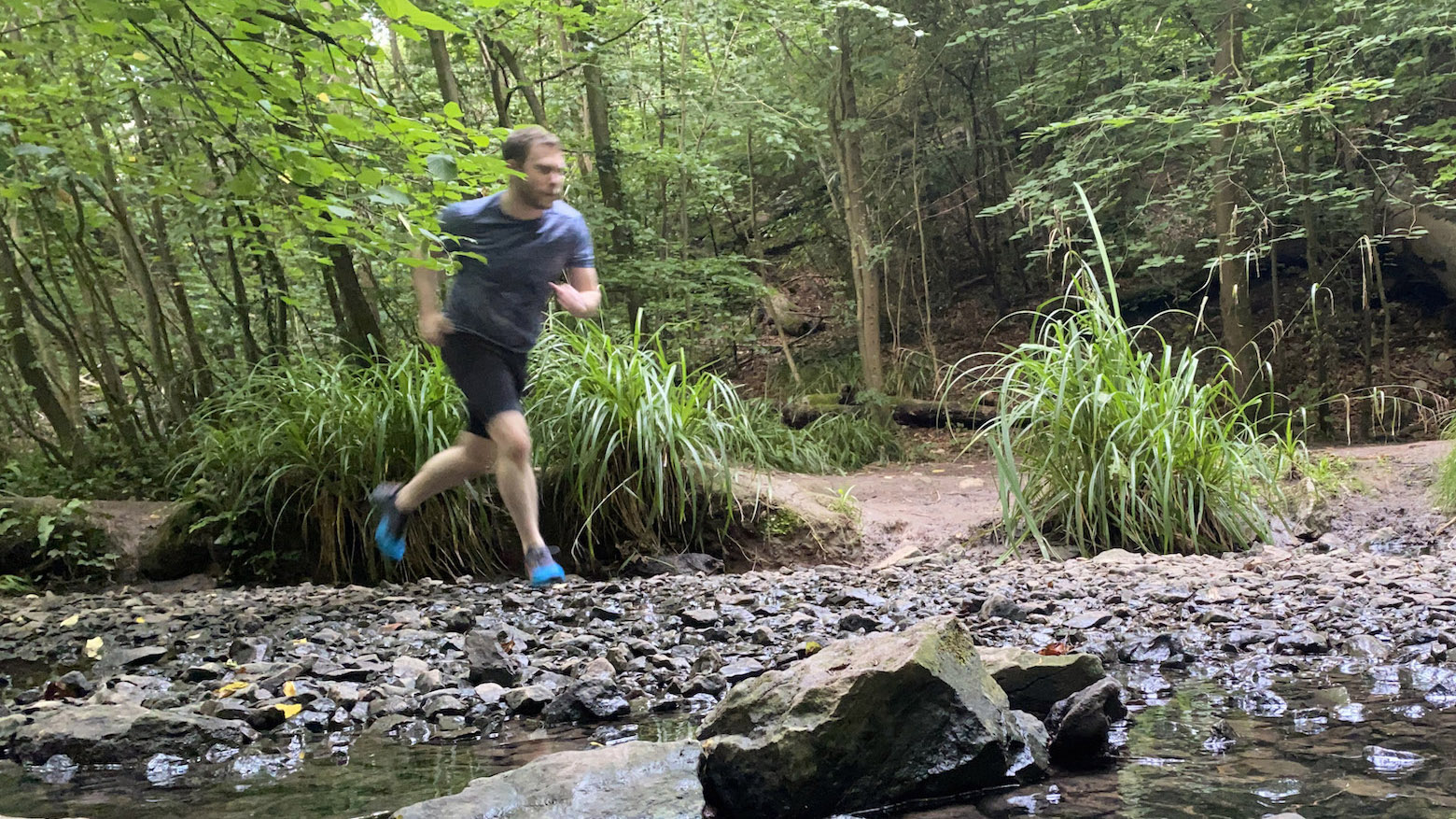
Alex is a trail running enthusiast and writer with an insatiable passion for trails and the mountains. When he can't get to the mountains, he gets as much vert in as he can on his local Bristol trails. His trail running CV includes the iconic Ring of Steall Skyrace and a marathon over Pen y Fan, South Wales' highest peak.
Today's best deals
Our expert tips expanded
Follow these tips when choosing a pair of trail running shoes. Take advantage of the fact that many sports shoes shops and retailers will be able to give advice on how trail running shoes should fit – many allow customers to test new footwear indoors before going outside to check that the fit is right.
It's a good idea to take your best trail running socks with you when trying on trail running shoes because different thicknesses of socks will give a different feel and fit.
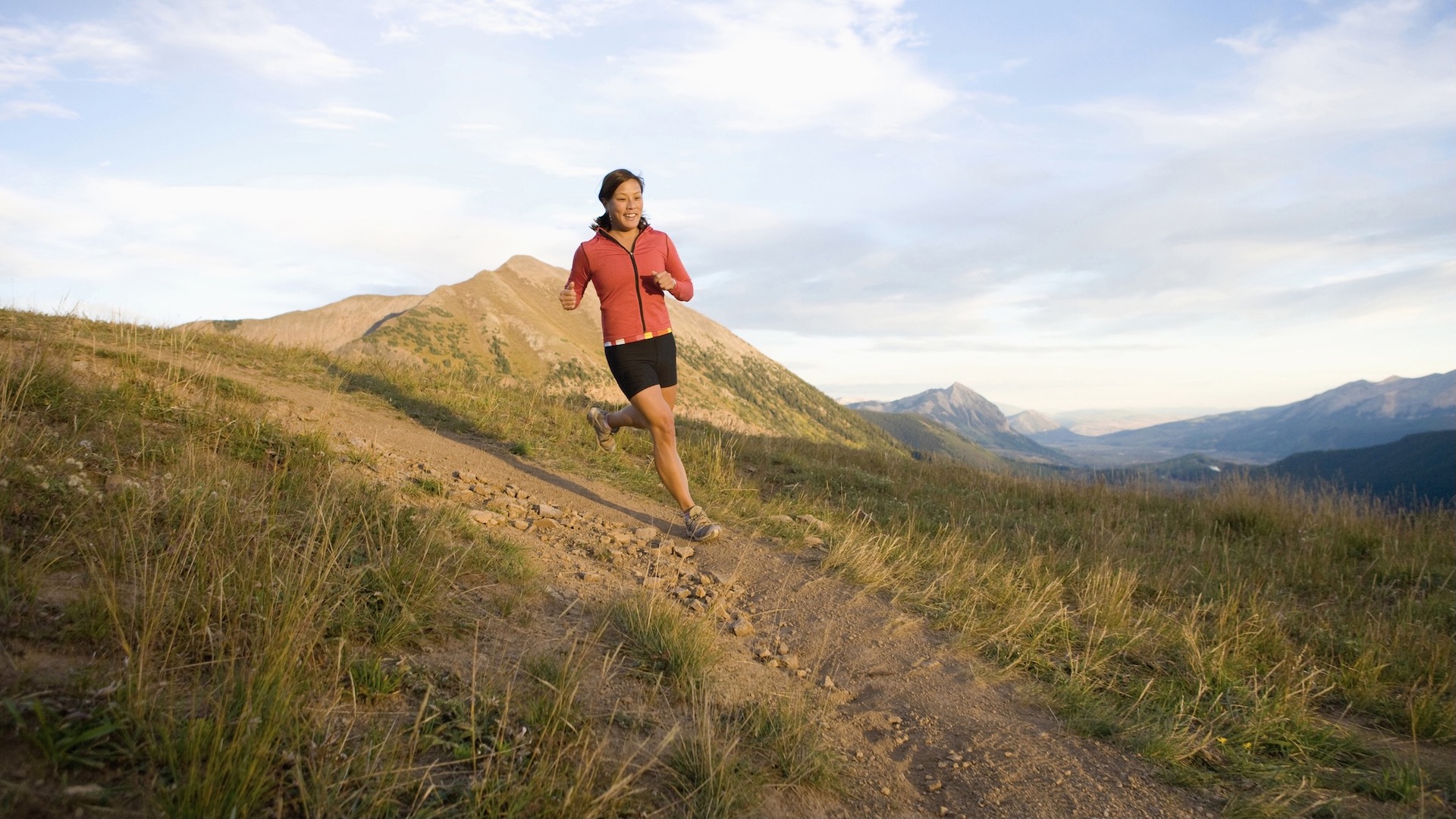
Comfortable support
A trail running shoe should feel immediately comfortable but not so similar to a slipper that your foot feels sloppy and unsupported.
Advnture Newsletter
All the latest inspiration, tips and guides to help you plan your next Advnture!
Think about how the shoe fits in the midfoot and arch area. Trail running footwear should feel supportive and neat fitting but not so that it pinches.
Remember to think about your gait, too. Check these tips to decide what your running gait is.
Supportive lacing
The lacing system should be easy to adjust and offer good levels of support. The aim is for comfort in a trail shoe that is supportive but not overly tight. Lacing up too tight at the midfoot can cause serious pain on a long run.
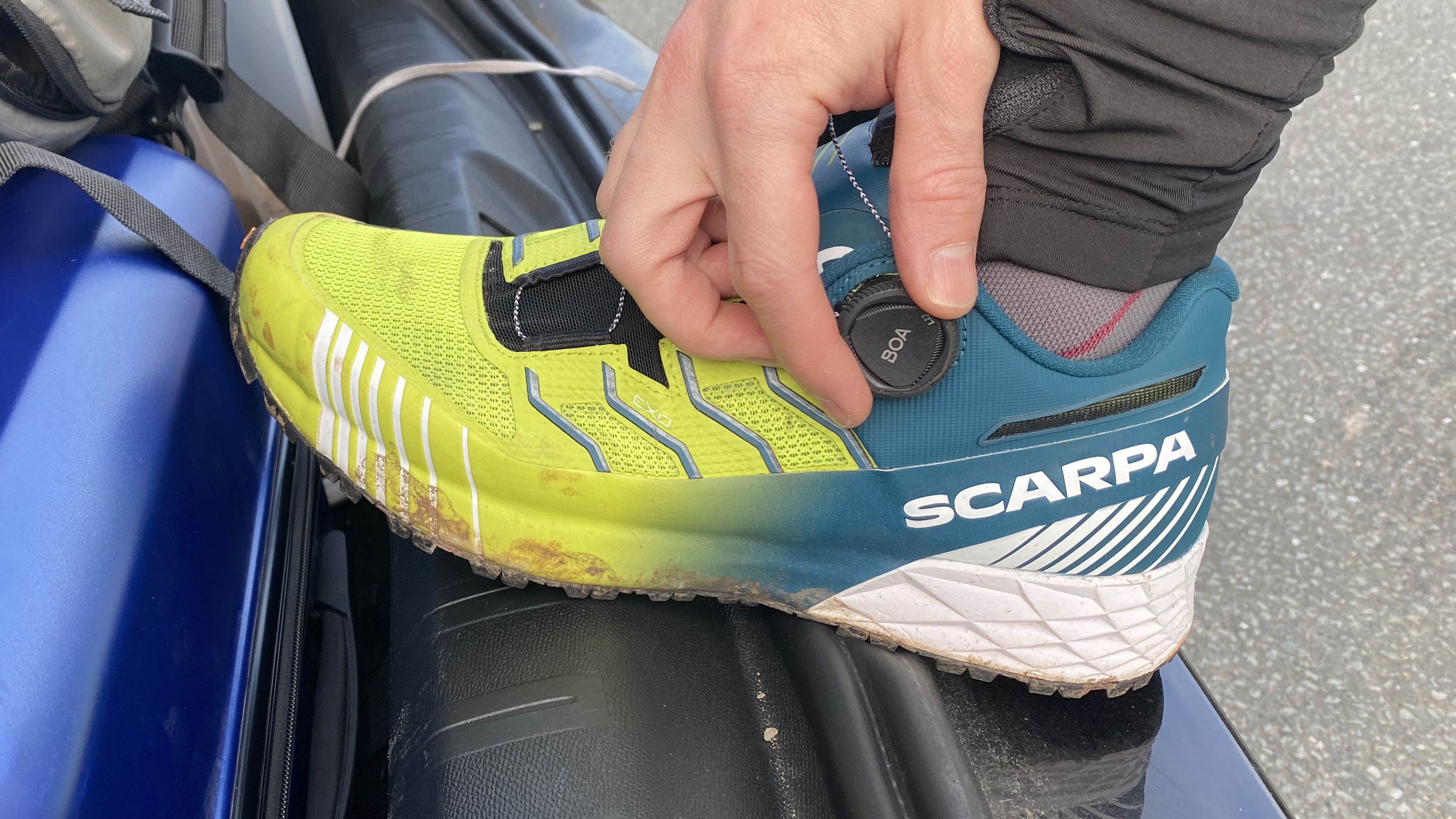
Heel hugging
The heel of the trail shoe should provide a locked-down feeling so that the rear of the foot doesn’t lift. When running on uneven ground, the foot will move about in your shoe so it needs to feel secure.
You don’t want the heel cup to dig into your ankle, especially the Achilles tendon, but equally you do not want it to be so loose or large that the heel moves about and ends up with rubs or blisters. A "heel hug" is a good way to think about the fit.
Wiggle room for the toes
Ensure you have at least a thumb’s width of space between the tip of your toes and the front of the trail shoe. When running hills and trails, it is likely that your feet will move forward in the shoe and so you want to make sure the toes don’t bang and rub the front inside of the trail footwear.
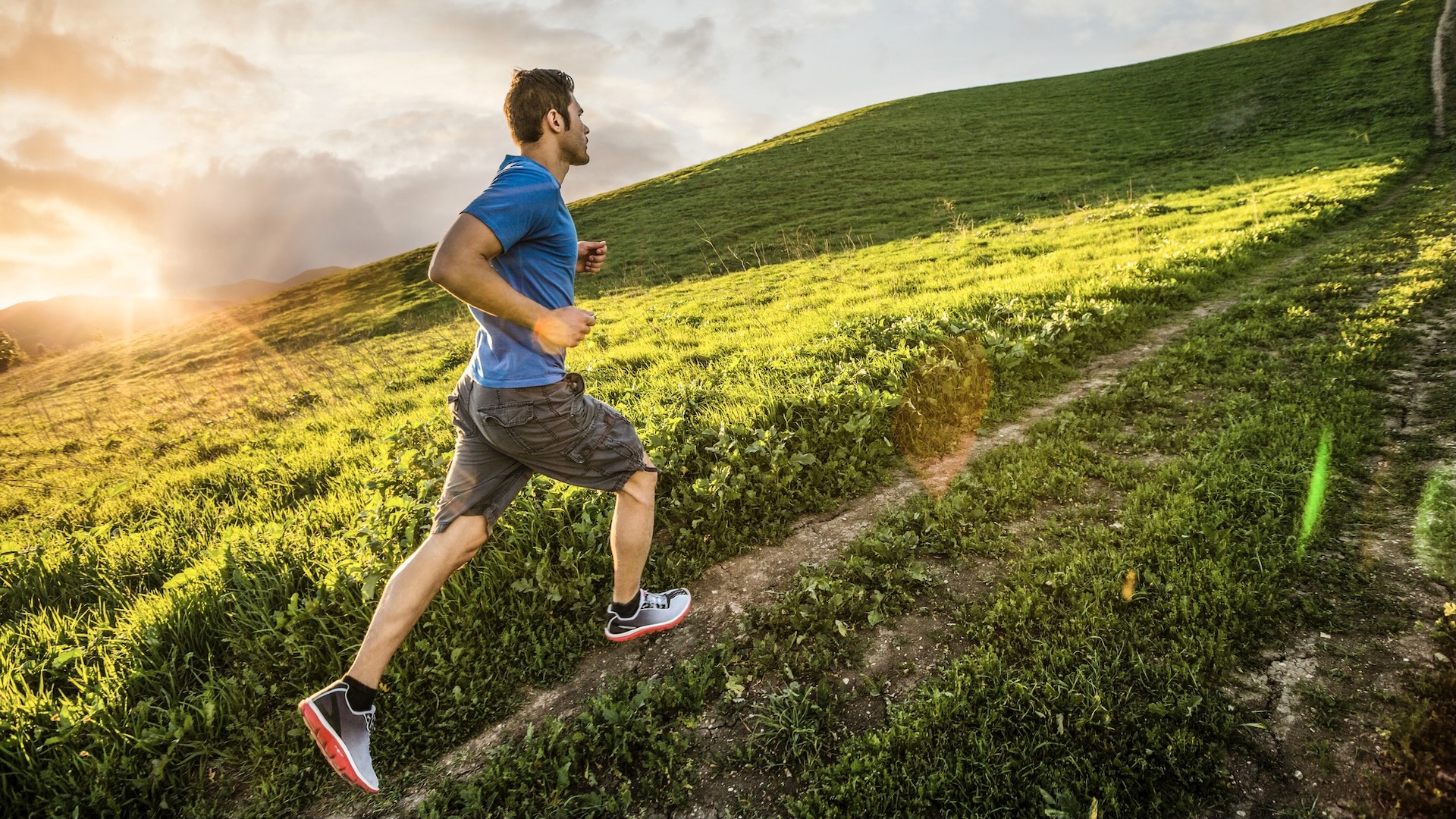
Space around the forefoot
Look for trail footwear with a wider forefoot area than you might choose for a road running shoe. This helps in two ways: firstly, your feet will naturally move about as you run on rough ground and you want to avoid the foot rubbing on fabric because the shoe is too narrow. Secondly, if you plan to run longer distances, or you are running in the warmer months, your feet will swell. Having a bit of extra space at the front of the running shoe will help to avoid foot constriction and blisters.
Decent cushioning
The amount of cushioning that you choose for your running shoe will depend on how much you want to feel the trail, as well as how much protection and “give” you want under your foot.
Some people prefer low levels of cushioning on the trails because they like to be able to feel the ground with greater precision. The ground will be naturally softer and more forgiving than tarmac, so the argument goes that there is less need for cushioning when running off-road.
However, there is a balance to be had because the trails will have stones and other natural obstacles, such as rocks and tree roots, so it might be a good idea to have some cushioning underfoot if you want to avoid feeling every bump and stone of the trail.
Good grip
The grip, or traction, of the sole of your trail running shoe is important, too, when ensuring the right fit. If you plan to run on mud, rocks, wet ground and hills, you’ll want a shoe with a sticky rubber sole, or good studs.
You'll quickly work out if your trail running shoe has the right fit when it offers good traction. The feel that you are looking for is comfort and support but with space for the foot to move naturally.

Fiona Russell is a widely published adventure journalist and blogger, better known as Fiona Outdoors. She is based in Scotland and is an all-round outdoors enthusiast with favorite activities including trail running, mountain walking, mountain biking, road cycling, triathlon and skiing (both downhill and backcountry). Aside from her own adventures, Fiona's biggest aim is to inspire others to enjoy getting outside and exploring, especially through her writing. She is also rarely seen without a running skort! Find out more at Fiona Outdoors.
